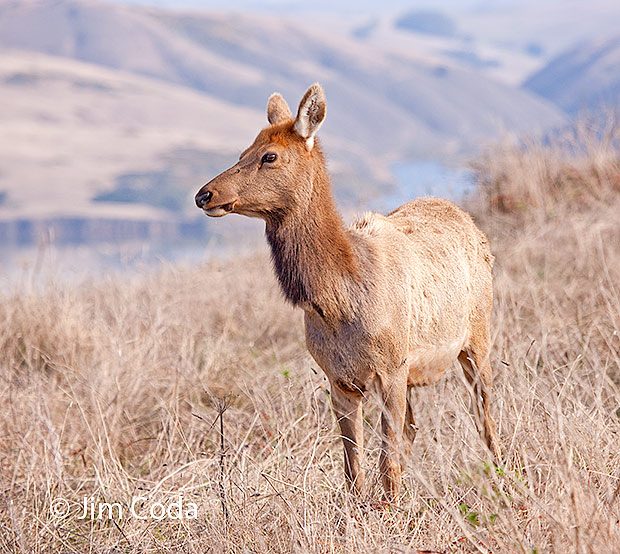Tule Elk, Point Reyes National Seashore

This cow elk was spotted feeding near the former Pierce Point Ranch which is located on the Tomales Point Peninsula. The Tomales Point Peninsula is where elk were re-introduced to the Seashore in about 1975. They are restricted by a fence that was erected just before the re-introduction. It runs across the peninsula from Tomales Bay to the ocean. The fence was installed to keep the elk out of the ranches on the Seashore.






